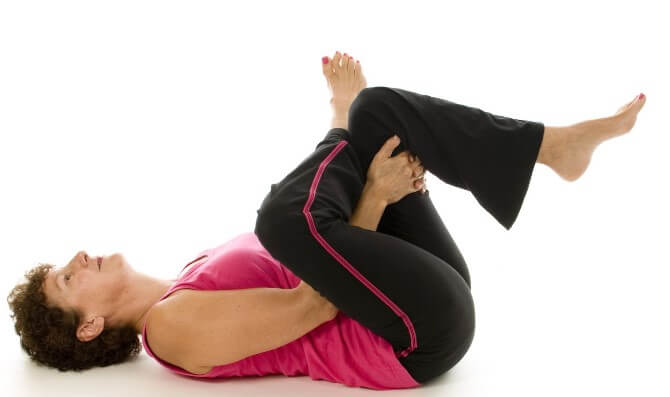Sciatica is a common condition that affects millions of people worldwide. It is characterized by pain, tingling, and numbness that radiates from the lower back through the buttocks and down the legs. The pain can be excruciating, making it difficult to perform daily activities.
The most common causes of sciatica are herniated discs, spinal stenosis, and degenerative disc disease. These conditions can compress the sciatic nerve, causing pain and discomfort. Other risk factors that can contribute to sciatica include obesity, poor posture, and a sedentary lifestyle.
Stretching is a proven way to alleviate the symptoms of sciatica. By stretching regularly, you can improve your flexibility, reduce inflammation, and ease the pain associated with sciatica. In this article, we’ll explore the top 10 stretches for sciatica relief that you can easily incorporate into your daily routine.
Hamstring Stretches

Tight hamstrings can contribute to sciatica pain by putting extra pressure on the lower back and pulling on the sciatic nerve. When your hamstrings are tight, they can cause your pelvis to tilt forward, leading to an increased curvature of the lower back. This can result in compression of the sciatic nerve, leading to pain and discomfort.
Fortunately, regular hamstring stretching can help relieve this pressure and reduce sciatic nerve pain. Here are three effective hamstring stretches that you can try:
- Seated Forward Bend: Start by sitting on the floor with your legs extended in front of you. Inhale and reach your arms overhead, lengthening your spine. Then, exhale and hinge forward from your hips, reaching for your feet or ankles. Hold the stretch for 30 seconds to one minute, breathing deeply and focusing on releasing tension in your hamstrings.
- Standing Hamstring Stretch: Stand with your feet hip-width apart and place your right foot on a step or elevated surface in front of you. Keep your right leg straight and hinge forward from your hips, reaching for your right foot. Hold the stretch for 30 seconds to one minute, then switch sides and repeat.
- Lying Hamstring Stretch: Lie on your back with your knees bent and your feet flat on the ground. Extend your right leg towards the ceiling, holding onto the back of your thigh or calf. Gently pull your leg towards your body, feeling a stretch in your hamstring. Hold the stretch for 30 seconds to one minute, then switch sides and repeat.
By incorporating these hamstring stretches into your daily routine, you can help alleviate the pressure on your lower back and reduce sciatic nerve pain.
Piriformis Stretches

The piriformis muscle is a small muscle located in the buttocks, and when it becomes tight or inflamed, it can compress the sciatic nerve, leading to sciatica pain. Fortunately, regular piriformis stretching can help reduce this compression and alleviate sciatic nerve pain. Here are three effective piriformis stretches:
- Figure-Four Stretch: Start by lying on your back with your knees bent and feet flat on the ground. Cross your right ankle over your left knee, then gently pull your left knee towards your chest until you feel a stretch in your right glute. Hold the stretch for 30 seconds to one minute, then switch sides and repeat.
- Seated Pigeon Pose: Sit on the floor with your legs crossed in front of you. Place your right ankle on top of your left knee, then gently lean forward until you feel a stretch in your right glute. Hold the stretch for 30 seconds to one minute, then switch sides and repeat.
- Supine Piriformis Stretch: Lie on your back with your knees bent and feet flat on the ground. Cross your right ankle over your left knee, then gently pull your left knee towards your chest until you feel a stretch in your right glute. Hold the stretch for 30 seconds to one minute, then switch sides and repeat.
By regularly practicing these piriformis stretches, you can help alleviate the pressure on your sciatic nerve and reduce sciatica pain. Remember to breathe deeply and relax into each stretch to maximize its benefits.
Lower Back Stretches

Tension in the lower back can contribute to sciatica pain by compressing the sciatic nerve and causing discomfort. By incorporating regular lower back stretches into your daily routine, you can help alleviate this tension and reduce sciatica pain. Here are three effective lower back stretches:
- Child’s Pose: Start on your hands and knees, with your wrists directly under your shoulders and your knees under your hips. Lower your hips back towards your heels, stretching your arms forward. Allow your forehead to rest on the ground, feeling a stretch in your lower back. Hold the stretch for 30 seconds to one minute.
- Knee-to-Chest Stretch: Lie on your back with your knees bent and feet flat on the ground. Bring your right knee towards your chest and hold it with your hands, feeling a stretch in your lower back. Hold the stretch for 30 seconds to one minute, then switch sides and repeat.
- Cobra Pose: Lie on your stomach with your hands under your shoulders. Press into your hands and lift your chest off the ground, keeping your hips and legs on the floor. Hold the pose for 15-30 seconds, then release and repeat two to three times.
By regularly practicing these lower back stretches, you can help release tension in your lower back and alleviate pressure on the sciatic nerve, reducing sciatica pain. Remember to breathe deeply and relax into each stretch to maximize its benefits.
Glute Stretches
Tight glutes can exacerbate sciatica symptoms by pulling on the lower back muscles and compressing the sciatic nerve. By incorporating regular glute stretches into your daily routine, you can help alleviate this tension and reduce sciatica pain. Here are three effective glute stretches:
- Seated Glute Stretch: Sit on the floor with your legs extended in front of you. Cross your right ankle over your left knee, then gently pull your left knee towards your chest until you feel a stretch in your right glute. Hold the stretch for 30 seconds to one minute, then switch sides and repeat.
- Lizard Pose: Start in a high plank position, then step your right foot forward, placing it outside your right hand. Lower your left knee to the ground and lower your forearms to the ground or onto a block. Feel a stretch in your right glute and hip. Hold the stretch for 30 seconds to one minute, then switch sides and repeat.
- Happy Baby Pose: Lie on your back and bring your knees towards your chest. Grab the outer edges of your feet and gently pull your knees towards your armpits, feeling a stretch in your glutes and hips. Hold the stretch for 30 seconds to one minute.
By regularly practicing these glute stretches, you can help release tension in your glutes and alleviate pressure on the sciatic nerve, reducing sciatica pain. Remember to breathe deeply and relax into each stretch to maximize its benefits.
Tips for Developing and Maintaining a Stretching Routine
Developing and maintaining a regular stretching routine is essential for managing sciatica pain. Here are some tips to help you establish a healthy stretching routine:
- Consistency and gradual progress: It’s important to be consistent with your stretching routine and gradually increase the intensity and duration of your stretches over time. Start with a few stretches a day and slowly work your way up to a full routine.
- Suggested frequency and duration of stretching: Aim to stretch at least once a day, ideally in the morning or evening. Each stretch should be held for 30 seconds to one minute, and you should aim to complete 10-15 stretches in total.
- Importance of proper form and breathing: When stretching, it’s important to maintain proper form and breathing. Breathe deeply and relax into each stretch, and avoid overstretching or pushing yourself too hard.
- Seek professional guidance: If you’re new to stretching or have a pre-existing medical condition, it’s important to seek guidance from a healthcare professional or qualified fitness instructor to ensure that you’re performing stretches correctly and safely.
By following these tips and making stretching a regular part of your routine, you can help manage sciatica pain and improve your overall mobility and flexibility.
Benefits of Stretching for Sciatica Relief
Stretching provides a multitude of benefits for individuals who suffer from sciatica. Here are three ways in which regular stretching can help alleviate sciatica pain:
- Improved flexibility and range of motion: Tight muscles can contribute to sciatica pain, making it difficult to move and perform daily activities. Regular stretching can help improve flexibility and range of motion, making it easier to move and reducing the risk of further injury.
- Reduced inflammation and pain: Stretching can help reduce inflammation in the body, which can contribute to sciatica pain. By releasing tension in the muscles, stretching can also help reduce pain and discomfort associated with sciatica.
- Better posture and spinal alignment: Poor posture can exacerbate sciatica symptoms, placing additional pressure on the lower back and hips. By incorporating stretches that focus on spinal alignment and posture, individuals can help alleviate pressure on the sciatic nerve and reduce sciatica pain.
By consistently practicing stretching, individuals can experience improved flexibility, reduced inflammation and pain, and better posture and spinal alignment, leading to improved overall health and wellbeing.
Scientific Evidence Supporting the Effectiveness of Stretching for Sciatica Relief
Numerous studies have investigated the effectiveness of stretching for relieving sciatica pain. Here are some key findings from relevant studies:
- A 2012 study published in the Journal of Orthopaedic & Sports Physical Therapy found that participants who performed specific stretches for their hamstrings and hip rotators experienced significant reductions in sciatica pain compared to a control group.
- A 2015 study published in the Journal of Back and Musculoskeletal Rehabilitation found that stretching and other therapeutic exercises were effective in reducing the severity and frequency of sciatica pain in a group of participants with chronic low back pain.
- A 2017 study published in the Journal of Physical Therapy Science found that a combination of stretching and spinal manipulation therapy was effective in reducing sciatica pain in a group of participants with lumbar disc herniation.
Overall, these studies suggest that regular stretching can be an effective way to alleviate sciatica pain and improve overall mobility and function. However, it’s important to note that every individual’s experience with sciatica is different, and consulting with a healthcare professional before beginning any new stretching or exercise routine is always recommended.
When to Seek Medical Attention
While stretching can be an effective way to manage sciatica pain, there are certain red flag symptoms that require immediate medical attention. Here are some signs that you should seek medical attention for your sciatica:
- Loss of bladder or bowel control
- Severe weakness or numbness in one or both legs
- Severe pain that worsens with coughing or sneezing
- Sudden onset of sciatica pain, particularly after a traumatic injury
If you experience any of these symptoms, it’s important to seek medical attention immediately, as they could be indicative of a more serious underlying condition.
Additionally, it’s important to consult with a healthcare professional before beginning any new exercise routine, particularly if you have a pre-existing medical condition or are currently experiencing sciatica pain. A healthcare professional can provide guidance on safe and effective stretches and exercises, as well as help determine the underlying cause of your sciatica and develop an appropriate treatment plan.
Conclusion
In conclusion, sciatica is a common condition that can cause pain and discomfort in the lower back, hips, and legs. Regular stretching can be an effective way to alleviate sciatica pain and improve overall mobility and function. By incorporating the top 10 stretches for sciatica relief into your daily routine, you can experience improved flexibility, reduced inflammation and pain, and better posture and spinal alignment.
Remember to be consistent with your stretching routine, gradually increasing the intensity and duration of your stretches over time. Seek guidance from a healthcare professional if you’re new to stretching or have a pre-existing medical condition.
By making stretching a regular part of your routine, you can help manage sciatica pain and improve your overall health and wellbeing. So, start incorporating these stretches into your daily routine and enjoy the benefits of a healthy, pain-free body.




